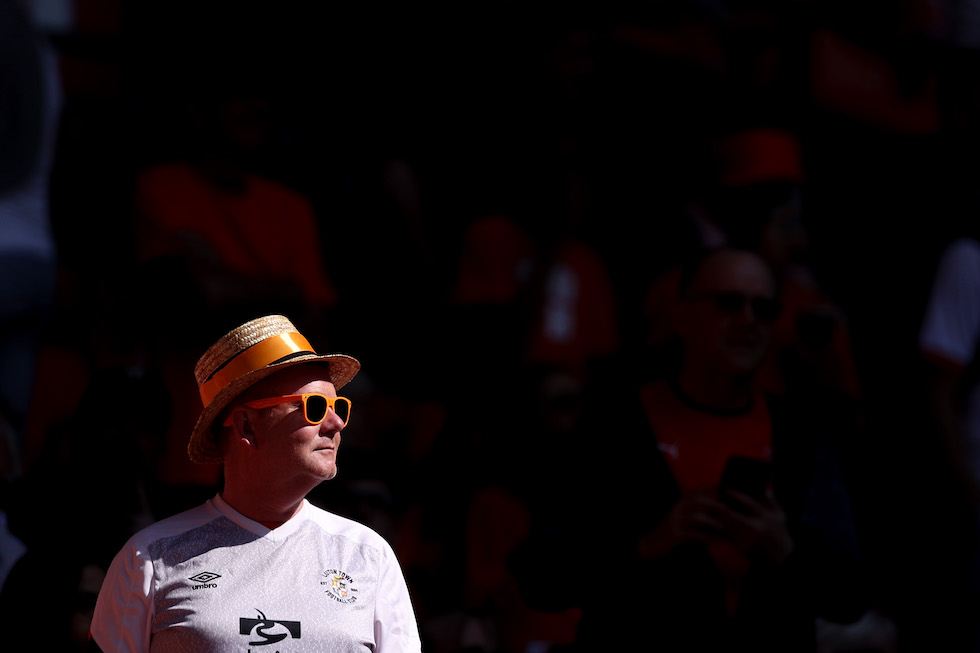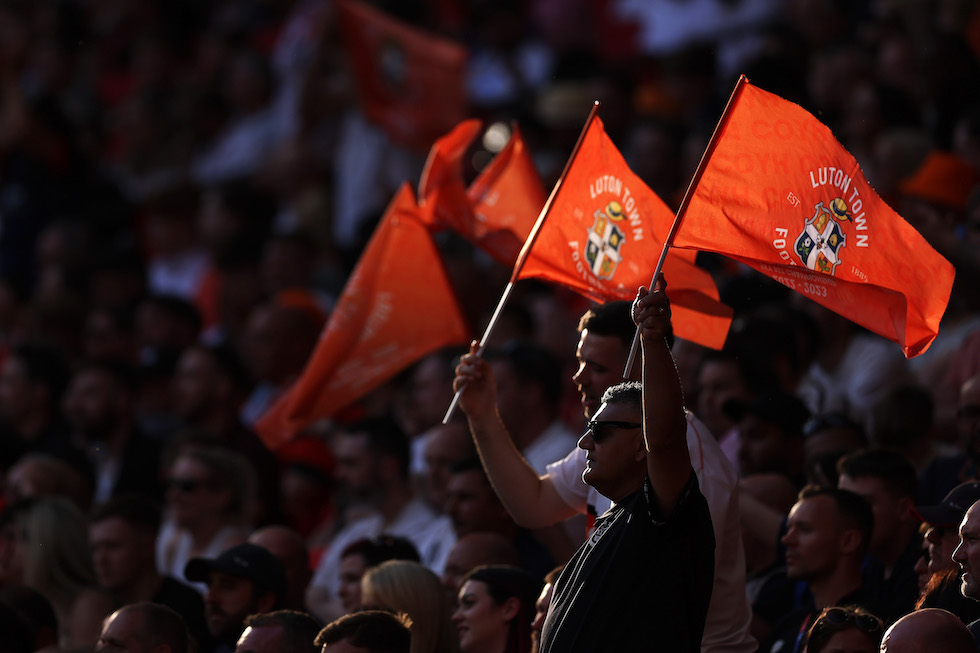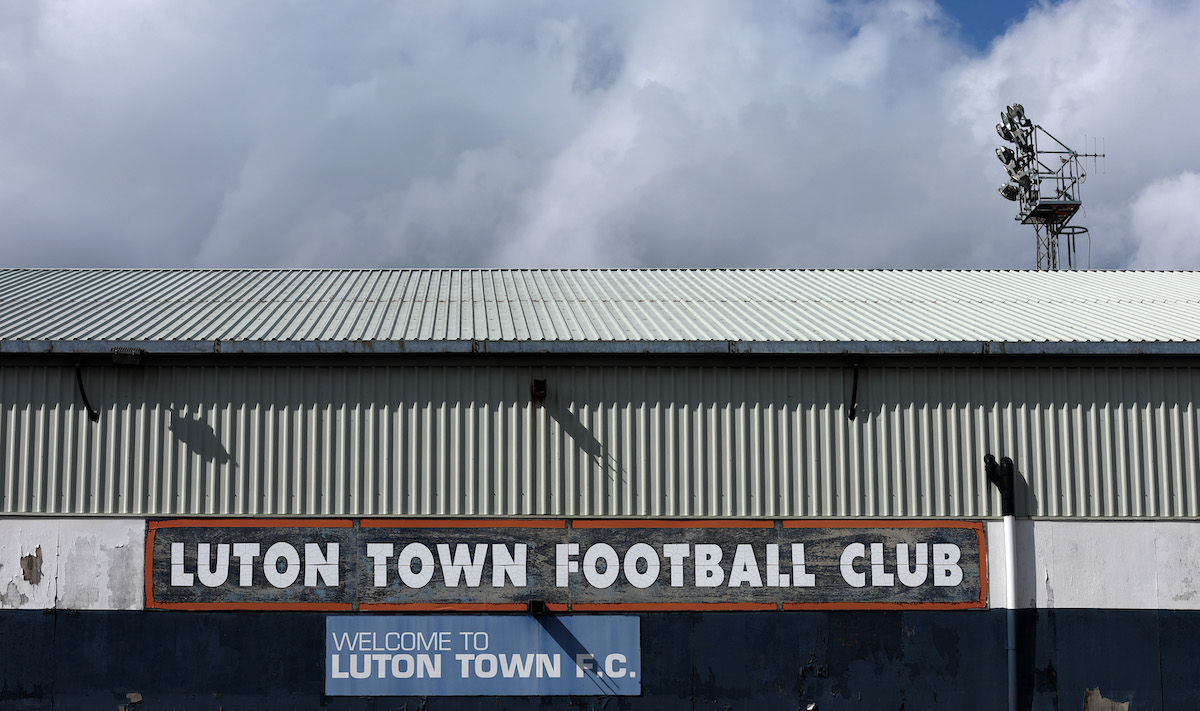Nine years ago Luton Town Football Club, an English football club from a north London commuter town known to many for its airport, played in the fifth tier of the domestic league. On 27 May, after winning the second division playoff final on penalties, the Championship earned promotion to the Premier League, the richest and most important league in the world.
No English team had ever managed to move from the fifth division to the Premier League in so few years. And for Luton Town it will be both a return and a debut: the team, in fact, had already arrived to play in the top English championship; however, he had done so in 1991/92 when that championship had not yet become the Premier League.
From August, when they make their debut in the Premier League, Luton Town could be noticed for another couple of records and firsts. Its stadium, built more than a century ago and repeatedly referred to as “a relic”, will be the smallest ever for the championship, given that it can accommodate just over ten thousand spectators. And one of his players, 29-year-old midfielder Pelly Ruddock Mpanzu, who has more than 300 caps for the club, could become the first to play, after four promotions in the same shirt, in five successive divisions of English football, up to the Premier League.
L’ingresso del Kenny (Alex Burstow/Getty Images)
Luton Town was founded in 1885 through the merger, between not a few tensions, of two city teams: Luton Wanderers and Luton Excelsior. It was among the first English teams to pay some of its players, but it already had liquidity problems at the end of the 19th century. Other problems, in what were his first decades and the last of the Victorian age of the United Kingdom, were with the stadiums and fields on which to play: one he changed due to payment difficulties, the other because it was too close to the railway and the footballers complained of difficulty seeing the ball through the smoke from the locomotives. In 1905 the team began playing at what is still its home ground: Kenilworth Road, known by many simply as ‘Kenny’.
The city has just over 200,000 inhabitants and is located in the English county of Bedfordshire. It is about 50 kilometers north of London and before being famous for its airport, around which much of the city’s economy revolves, it was famous for its production of hats, which is why players and supporters are also known as ” Hatters”, the hatters.

Un tifoso (Richard Heathcote/Getty Images)
Luton Town reached the pinnacle of their 138-year history in 1988 when, having already played steadily in the first division for some seasons, they lifted the League Cup after beating Alan Smith’s Arsenal 3-2 in the final and Tony Adams. Thanks to that victory Luton Town could have qualified for the UEFA Cup and thus played their first matches at European level, but at that time English teams were still disqualified from European cups as a result of the Heysel tragedy.
After a few campaigns finishing at the bottom of the table, Luton Town finished 20th in 1992, were relegated from what would become the Premier League a year later and dropped into the second division. Just that year, among other things, Wimbledon was promoted to the Premier League, a team also known as the “crazy gang” which had made a climb similar to that of Luton Town, however taking it one year longer.
Even in the second tier Luton Town spent a few seasons at the bottom of the table, never coming close to being promoted to the Premier League: in 1996 they were relegated again, and did so again in 2001. Up and down years followed, with a couple of promotions allowing to climb back up to the Championship, but then came economic troubles and three successive relegations which took Luton Town from the second to the fifth division. In the last of these three relegations, the team, which in the meantime had risked bankruptcy at least a couple of times, was punished with a 30-point penalty for financial irregularities. It was a penalty that discouraged many players from either joining or staying at Luton Town, who in fact at one point he found himself with just six registered players.
For five seasons the team remained in the fifth division, in a league that was only partially professional. Some twenty years after being consistently one of England’s top twenty, Luton Town were barely in the top 100, on the same level as Wrexham, the Welsh side at the heart of the docuseries Welcome to Wrexham.
The recovery began with a promotion in 2014, two in a row between 2018 and 2019 and the last one a few days ago: in a final played at Wembley against Coventry City and won on penalties after a game in which the Luton captain left the field after a few minutes to have lost consciousness (she’s fine now). Promotion to the Premier League via playoffs came at the end of a league finished third.

The players after the decisive penalty (Richard Heathcote/Getty Images)
The manager, the forty-year-old Welshman Rob Edwards, had arrived at the start of the season (after a promotion and a sack with his two previous teams) to replace Nathan Jones, the former manager who, as he had already done once before, always as coach of Luton Town, he had chosen to leave the team to go and train a more important one: in the first case Stoke City, in the second Southampton (which this season was relegated from the Premier League to the Championship).
Jones has been the most present coach in recent years (from 2016 to 2019 and then from 2020 until November 2022), known among other things for setting fire to the ping pong table around which, in his view , the players spent too much time before and after training: «I could have burned the table or convinced them that it was better to train in the gym, I decided that I had to burn the table first». Edwards is the manager who arrived on the run, with the season already underway, without much experience and with a past at Watford, the team with which Luton Town have their closest rivalry.

Rob Edwards (Richard Heathcote/Getty Images)
Luton Town coached by Edwards has been a team this season not particularly eager to manage ball possession but quite intense in pressing and, like he wrote The Athletic“is at its best when it has to make life awful for anyone who happens to play against it, especially at Kenilworth Road.”
In the Luton squad there are no players that are particularly stronger than others or “out of category”, i.e. from the Premier League. It is one of those teams where it is said that the strength lies in the group and that the whole is greater than the sum of the parts. However, the most symbolic player is Mpanzu, the twenty-nine-year-old midfielder of Congolese origins and English nationality, who arrived at Luton when he was not yet twenty and on loan from West Ham, where he had never played in the first team.
Mpanzu recalled how he was initially quite surprised that Luton Town were training on a public pitch, with people walking around and sometimes in the middle of the pitch. Over the years he has increasingly identified with the team, to which he moved permanently once the loan ended. If he were to stay next season as well, he would be the first player to play for the same club from the fifth division up to the Premier League.

Pelly Ruddock Mpanzu (Richard Heathcote/Getty Images)
More than anything else, Luton Town stands out for the Kenny, the stadium. It is so unimposing that, even a few steps from its stands, it is hard to identify it among the many houses that surround it, some of which have windows, stairs or terraces a few meters from the outside of the stadium. “It’s in the middle of a very residential neighborhood, sandwiched between red brick houses where every goal makes the cups of tea rattle,” wrote the Wall Street Journal; and some have pointed out that only in Texas There are 75 largest football stadiums.

The houses and, to the right, the exterior of the stadium (Andrew Parsons/Parsons Media via ZUMA Press Wire)
The way certain English cups work, in which the strongest teams sometimes meet those from the lower leagues, in recent years the Kenny has already hosted big teams such as Chelsea or Manchester United. In order to become a Premier League stadium, however, it will have to be fixed in some places: among other things it will have to add seats for the press, allow the addition of some cameras and improve the lighting.

(Shaun Botterill/Getty Images)
Although small and old-fashioned, the Kenny is nonetheless considered, net of certain improvements, adequate to English standards: «If you compare it to the Brianteo stadium in Monza», he wrote The Athletic«it looks like the Arsenal stadium».
Regardless of comparisons with Italian stadiums, during the summer Kenilworth Road will be at the center of modernization works for a total cost of at least 12 million euros, all this despite the fact that the club has already decided to build a new 23,000-seat stadium to play in, according to current plans, starting in 2026.
In the last year, Luton Town have spent less on the salaries of all their players than they will have to spend in a few months to fix up their old stadium. However, it will not be a problem because the transition from the Championship to the Premier League will allow the team to greatly increase its turnover. Furthermore, the team comes from years of rather careful management: since 2008 it has been managed by the Luton Town Supporters Trust, a supporters’ fund which among other things is against betting companies as sponsors and is very proud of the fact that there are no foreign owners. A banner often prominently displayed in the stadium says that “football belongs to the fans, not to oligarchs, sheiks, opportunists or bankers”.
Luton Town managed to secure promotion to the Premier League in the season that has just ended despite spending far less than many other Championship sides.
Stadium aside, in the coming months Luton Town will have to understand how and how much to try to strengthen themselves to play in the Premier League in a season at the end of which many already expect the team to end up bouncing back to the Championship. On the one hand we will have to find players who arrive at Luton on loan, so as to cut costs, and on the other we will need to sign others, however if possible foreseeing the possibility of relegation, so as to insert a specific clause in their contracts.

(Richard Heathcote/Getty Images)
Edwards, the coach, said that even in these months the club will move with caution, “without crazy spending” and with the aim of “preserving the future of the team” and avoid of “ending up in the same position as ten years ago”. Gary Sweet, the managing director, said he believed that Kenilworth Road could play an important role in an eventual salvation, which he defined as “a real stadium for real football, with a history and a tradition, not a container sterile”.
– Read also: Wrexham seasons
